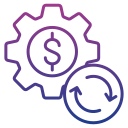What Trust Really Means in Economic Reporting
Reliable economic news explains where numbers came from, how they were collected, and what limitations exist. When a source shows its methodology, definitions, and revisions calendar, you can better judge the strength of each conclusion and avoid misinterpreting trends.
What Trust Really Means in Economic Reporting
Trustworthy outlets publish corrections promptly and prominently. They link updated articles to prior versions, explain what changed, and show humility about uncertainty. That culture signals respect for readers and reinforces confidence during volatile cycles and breaking stories.








